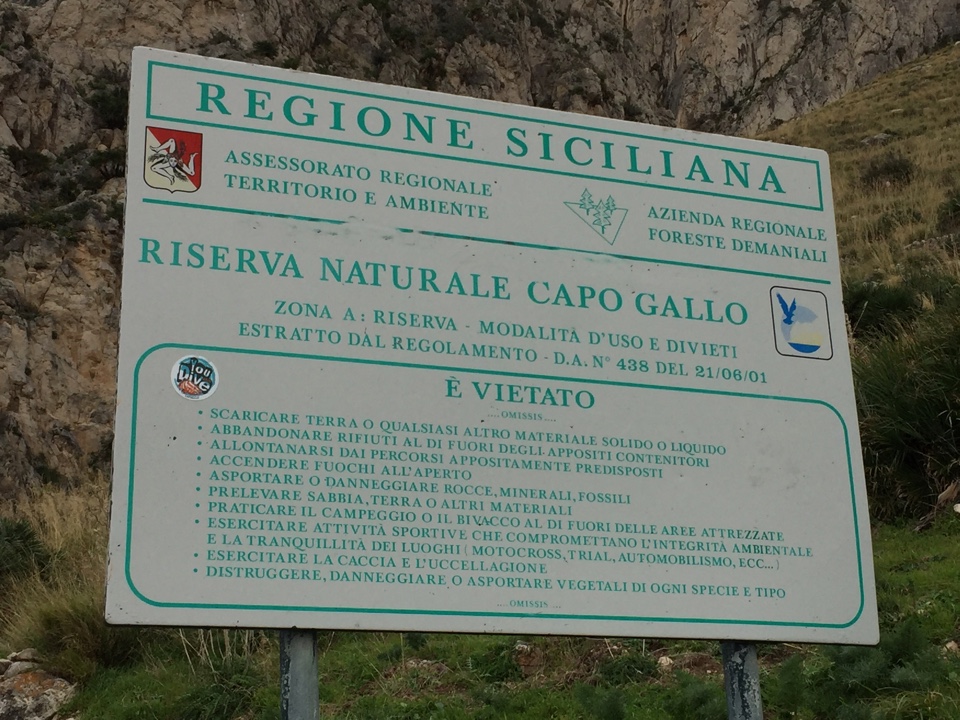
DENOMINATION:
R.N.O. CAPO GALLO
TYPOLOGY: ORIENTED NATURE RESERVE
REGION: SICILY
MUNICIPALITY: PALERMO
EXTENSION: RESERVE AREA 585.83 Ha
RESERVE EXTENSION ZONE A – 484.37 Ha
RESERVE EXTENSION ZONE B – 101.46 Ha
GEOGRAPHICAL REFERENCES: Tav. I.G.M.I. n. 249 III N.O.
FOUNDATION: D.A. n. 438 – 21.06.01
The Capo Gallo Nature Reserve is a highly natural site, unique for its flora, fauna, geological conformation and its archaeological content. In 2001 it was established as a Reserve for the protection of geomorphological formations, of endemic and rare flora and fauna species and to protect the “marciapiede a Vermeti” a particular type of bioconstruction present along the coast. The management is entrusted to the Dipartimento Regionale dello Sviluppo Rurale e Territoriale (ex Aziende Foreste e Demaniali).
Capo Gallo is an Oriented Nature Reserve or a type of protected area in which man-made interventions may be carried out, in order to preserve the naturalistic and landscape heritage; cultivation and agrosilvopastoral activities are allowed, as long as not harmful to the natural environment.
The area, located from Punta Barcarello to Capo Gallo and to the golf of Mondello, consist of an A area surrounded by a B area that protects the reserve (and prereserve) with controlled development.
In the reserve and prereserve areas, the regulations from are in force, with which the uses and prohibitions to be observed are established. From 2012, in the sea stretch adjacent to the Reserve, the “Capo Gallo – Isola delle Femmine” was also established to protect and enhance its biological resources.
SIC
The territory in which the Reserve is established is characterized by different habitats and by the presence of various endemic species, therefore it is even included in the list of Sites of Community Importance. The SIC, ITA020006 Capo Gallo (INSERIRE SCHEDA SIC), falls within an area of 547 Ha of the Reserve.
 Types of habitats present within the SIC of the Capo Gallo Reserve
Types of habitats present within the SIC of the Capo Gallo Reserve
- Sea cliffs;
- Vegetated sea cliffs of the Mediterranean coasts with endemic Limonium spp.
- Annual Salicornia pioneer vegetation and other species of muddy and sandy areas;
- Mediterranean temporary ponds;
- Thermo-Mediterranean and pre-desert scrub;
- Substrate paths of grasses and annual plants of the Thero-Brachypodietea;
- Western Mediterranean and thermophilous scree;
- Calcareous rocky slopes with chasmophytic vegetation;
- Caves not open to the public;
- Submerged or partially submerged sea caves;
- Quercus ilex and Quercus rotundifolia forests.

